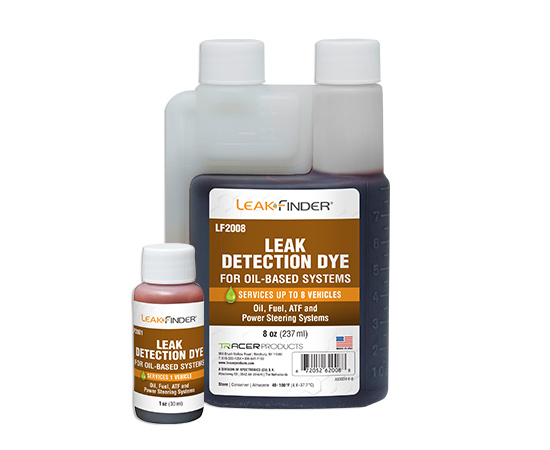Adding UV Dye to Large Vehicles
LeakFinder LF2001, LF2008, and LF2001CS Oil-Based UV Leak Detection Dyes are the perfect tool for diagnosing leaks in engine oil, transmission fluid, power steering fluid, hydraulic fluid, and more.
But in larger vehicles – such as trucks and heavy-duty vehicles – the fluid reservoirs are typically bigger and contain more oil-based fluid than a standard passenger vehicle.
When these bigger systems are being treated with fluorescent leak detection dye, more dye may be required to activate the fluorescent response effectively.
Learn how to use the correct application dilution ratio in larger vehicle systems in the troubleshooting instructions below.
If there’s difficulty in finding leaks in large systems, be sure to test a sample of the host fluid for fluorescence.
First Step: Add Dye
- Add 1 oz (30 ml) of dye to the appropriate fluid fill port.
- 1 oz (30 ml) services 1 STANDARD VEHICLE.
- For vehicles with LARGE oil-based fluid reservoirs, more dye is recommended (2 oz).
Second Step: Scan the System
Scan the system in a shaded area away from direct sunlight. If no leaks are immediately detected, operate the system for a longer period of time so that leakage can accumulate on the exterior of the system. Be sure to scan the entire surface area of the system being treated with UV dye.
Third Step: Test Fluorescence
NOTE: If there’s difficulty in finding leaks in large systems, test a sample of the host fluid for fluorescence.
- Test a sample of the dye-treated host fluid.
- In the instance of engine oil leaks, remove the dipstick and test the oil for a yellow/green fluorescent glow.
If no apparent fluorescent glow appears, add more dye to the system and repeat the steps above. - Check the other oil-based systems by this testing method and confirm that there is a bright fluorescence.






